The World Nomads Podcast: Guatemala
What not to wear on a volcano (must see photo!) - rebuilding after a natural disaster - using bitcoin to travel - and a new shark species discovered.
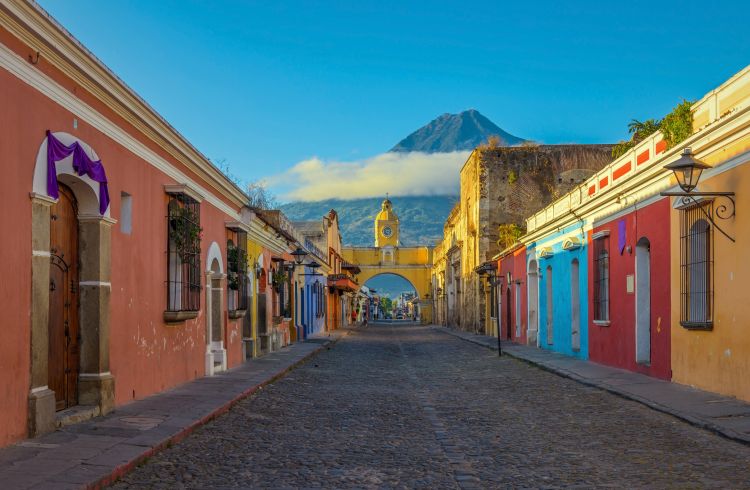 Photo © GettyImages/SL_Photography
Photo © GettyImages/SL_Photography
Listen Now
Guatemala
In this episode, we find out what not to wear when climbing a volcano, rebuilding after a natural disaster, and using bitcoin to travel.
Read personal, inspiring and engaging stories about travel
What's in the Episode
00:20 Welcome
00:50 Who is in the episode
01:28 Quiz Question
01:47 Shannon O’Donnell
09:35 Roasting marshmallows over a volcano
10:41 AirTreks
14:24 Using Bitcoin to travel
15:52 Travel News
19:49 What is a mojo?
20:58 Cassie’s disaster relief efforts
27:28 Footprints Network
28:18 Shark and Ray conservation in Belize
34:10 New shark species discovered
37:51 Amazing Nomad
Who's on the Show?
In 2013 National Geographic named Shannon O’Donnell Traveler of the Year for her work in responsible tourism.
Check out her website A Little Adrift, a resource point to motivate and encourage other travelers through stories, advice, and photography.
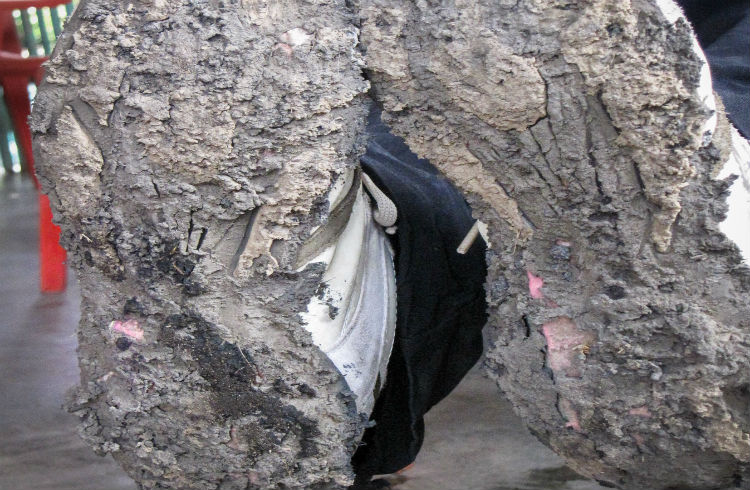
How to Explore Volcanoes Safely: 5 Survival Tips
Cassie Wilkins is a World Nomad contributor currently volunteering in Antigua following the fatal volcano eruption of Volcán de Fuego in June 2018.
If you'd like to donate, 100% of the funds raised are going straight to building homes and helping families affected by the volcano
Constru Casa is the Antigua-based NGO Cassie is working with to help build houses
World Central Kitchen Guatemala is an American NGO who are feeding thousands of people every day and doing an amazing job.
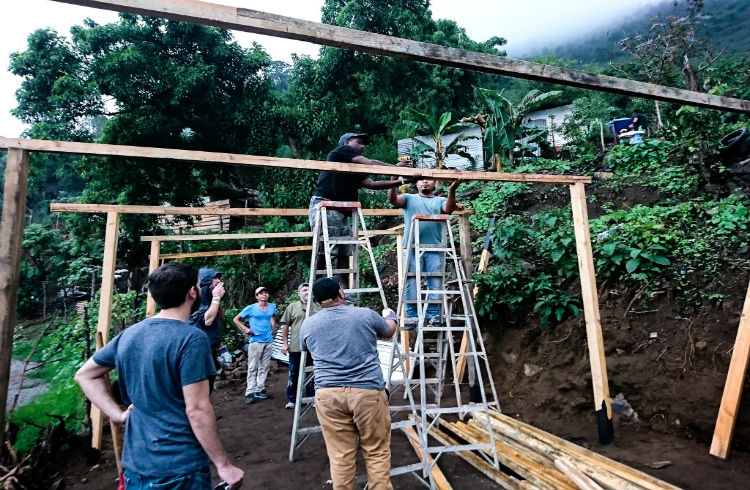
Cassie has also written an article for us on places to visit in Guatemala and top historic sites.
Our Footprints Network is currently funding 10 projects including shark and ray conservation in Belize. Dr. Rachel Graham takes us through the background and provides an overview of the project funded by micro-donations.
Rachel is also the Founder and Executive Director of MarAlliance, whose team recently discovered a new shark species
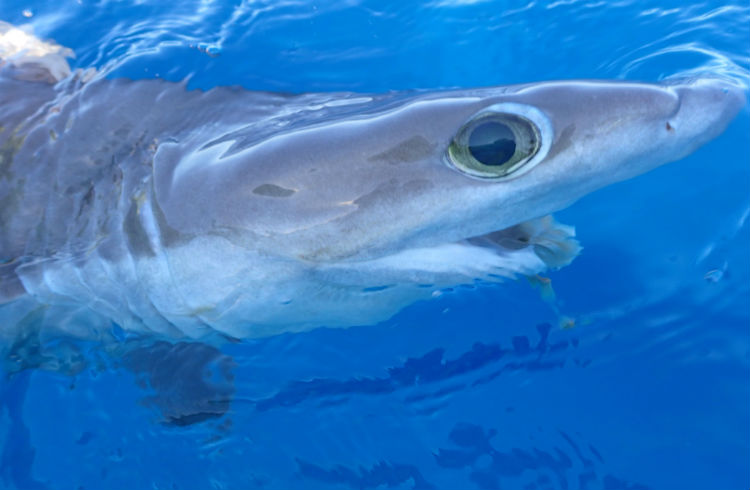
Sara Tiffany is the Director of Projects for AirTreks, a leader in multi-stop international travel, especially complex routes.
AirTreks is also one of the few companies to accept cryptocurrency. Read how they helped Simon plan his trip using bitcoin.
Explore South and Central America on a budget, including Guatemala City.
Resources & Links
The busiest day for air traffic ever!
In July 2018 the flight tracker app Flightradar24 tracked an amazing 205,000 flights in one day, the busiest day ever in aviation history.
Scholarships Newsletter: Sign up for scholarships news and see what opportunities are live here.
Check out the all the projects our Footprints Network is funding.
Kamran Ali is a photographer who quit his job as a software developer in Germany and set out to explore the world by bicycle. Take a look at his pics of Guatemala in this photo essay.
Follow World Nomads on Instagram for the latest stories, and #WorldNomads for your chance to be featured.
Want to Re-publish This Episode?
Copy this code onto your web page or blog:
<iframe width="100%" height="200" src="https://player.whooshkaa.com/player/episode/id/258146?visual=true&sharing=true" frameborder="0" style="width: 100%; height: 200px"></iframe>
Want to Talk to us?
We want to hear from you! If you have any travel insurance questions to Ask Phil, want to give us feedback on the episode, or have suggestions for topics you'd like us to cover, email us at podcast@worldnomads.com
Sign up for Podcast News
Explore your boundaries and discover your next adventure with The World Nomads Podcast. Hosted by Podcast Producer Kim Napier and World Nomads Phil Sylvester, each episode will take you around the world with insights into destinations from travelers and experts. They’ll share the latest in travel news, answer your travel questions and fill you in on what World Nomads is up to, including the latest scholarships and guides. The World Nomads Podcast is not your usual travel Podcast. It’s everything for the adventurous, independent traveler. Don’t miss out. Subscribe today.
Speaker 1: Welcome to the World Nomads podcast delivered by World Nomads, the travel lifestyle, and insurance brand. It's not your usual travel podcast. It's everything for the adventurous, independent traveler.
Kim: Yes. We are continuing to inspire you to travel as we feature in this episode, Guatemala is the destination, Phil.
Phil: A country in Central America with an estimated population of around 16.6 million, making it the most populated state in Central America. It's located between the Caribbean Sea and the Pacific Ocean, which makes it a target for hurricanes, of course. It also has 37 volcanos, four of them active, and, of course, there was that eruption in June of the Volcán de Fuego, the Volcano of Fire, sadly, that killed 113 people, and hundreds are still missing.
Kim: Yeah, and we'll hear about the amazing recovery work that is being done there in the aftermath of that volcano later in the episode with Cassie. She's also written a couple of articles for World Nomads covering Guatemala's colonial churches, the ancient ruins, and the amazing hikes. We'll celebrate a milestone for the World Nomads Footprint Network, speaking with Dr. Rachel Graham, who is the founder and executive director of MarAlliance about a current project the network is funding in Belize. And if you need help planning a trip ... Who doesn't? AirTrek can help. We will get their tips and hear about the first AirTrek, Phil, to be booked using Bitcoin.
Phil: I haven't any, have you?
Kim: No. Wish I did. It's worth it.
Phil: We can have a part of one. You don't have to have a whole one. They are very expensive.
Kim: What's your quiz question?
Phil: All right, the name Guatemala is thought to be derived from an ancient Mayan language and means "land of many trees." Bit of a hint there about the place being heavily forested, but how much of Guatemala is forest? I'll tell you at the end of the show.
Kim: In 2013, Shannon O'Donnell was named National Geographic's Traveler of the year for her work in responsible tourism. She started traveling in 2008, and 10 years later, she's still going.
Shannon O.: I only recently, in the last four months, decided to make Barcelona a home base. So, I took off my 50-pound backpack, and it has a place to rest now.
Kim: Nice one. Well, tell us about A Little Adrift, which is how we came to find you.
Shannon O.: It started in 2008. It's really hard to remember what it was like to try to find travel information on the internet. But there wasn't a lot about planning around the world trip, and so when ... I was a solo female, figuring out what it was going to be like to be on the road for an entire year. At the time I thought it going to be just a year. But there wasn't information. So, A Little Adrift started as this way to document what you needed to know to travel better. To travel around the world. All the information that not just a solo person would need to know.
And I already had a service focus in my life, and so, I had planned on volunteering and supporting community-led projects, and that led to a shift in A Little Adrift over the years. Once there was a lot of information out there on my blog and others, I started showing people how you could travel with a focus on helping. Like, travel as a force for good. And that's what A Little Adrift is today.
Kim: We'll share the site, obviously, in show notes, but it has a comprehensive list of resources there from responsible travel to planning your travel, digital nomads, and bloggers. But we, specifically, not only did we not want to [inaudible 00:03:16] A Little Adrift, wanted to chat to you about Guatemala.
Shannon O.: Yes, which is one of my favorite countries in the world. It's such a beautiful place.
Phil: Why? What's so good about it?
Shannon O.: You know, it's very different than the culture that you find elsewhere. So, I had traveled overland from Mexico and Belize, and Guatemala felt like a warm hug. The Mayan culture is right there and evident, and so, for people who travel with a want to understand the culture and to understand any different culture, it's right there in your face, and it's very different than the main Hispanic culture that's sort of across the region. You really get to feel like there are opportunities to learn more, and help support the Mayan communities, and hike through ... it's just beautiful, too. So, you get to hike through the Highlands, and it's an absolutely stunning country.
Kim: We'll get to its beauty, but one of your blogs gets a lot of "Thank you, Shannons. Thank you for sharing this story." It was when you were out, and one of the waiters came up and said, "If you have drugs, flush in the toilet now. Police do drug raid next door. Do now." Take us through that story.
Shannon O.: Oh, so, that's really funny, and there is a drug culture around the Lake Atitlán, especially, and so, this is what a lot of people know Central America for. But some backpackers go for, you know, some fun, to the lake area. There was a movie night, so I was there sitting at an English movie night at one of the coffee shops. A couple of people stayed, but there was this massive sweep, actually, it was a drug sweep. Although, they didn't find a lot of drugs, because there was this message that went through the backpacker area first. They started taking anybody who didn't have their passport on them and taking them into police custody until they could find their passport. The moment I heard that something was going around, I was like, "Yeah, I'm out. Why would I sit here? Like, the movie is really good and all, but why would I sit here?" And so-
Phil: What was the movie? I want to know what's the movie that you go to when you, where it's enhanced by a backpacker experience?
Shannon O.: You know, I don't remember, and then I see the drug [crosstalk 00:05:16]-
Phil: Oh, and so the drugs were good, then.
Kim: Shannon would never do such a thing, would you?
Phil: No, no.
Shannon O.: No, no, never. But-
Kim: She didn't run because she had drugs on her.
Phil: She had her personal ... okay, I'm with it now. Right on. We go to it.
Kim: No passport.
Shannon O.: Because, apparently, you're supposed to carry your passport. This was the first time, so this was 2010, I had never heard before. I had already been on the road two years. I'd never heard that you're supposed to have your passport on you in a lot of foreign countries.
Phil: Yeah. Yep, yeah. Even like France, I think. Even places like that. So, my travel insurance safety tip of the day. If you've got a copy of your passport, then if you get pickpocketed, you don't lose your passport. But if you've got the information page inside the passport as a photocopy, that usually satisfies the local police.
Kim: Well, that's one of Shannon's tips-
Phil: Oh, good.
Kim: ... just to make sure that you always carry at least a photocopy of your passport. And I think in that particular blog you wrote that there were around 40 backpackers that were put into jail?
Shannon O.: And one of them was my roommate. So, I went home, and I didn't really know what was happening. Right? I just sort of .. I'm not big, you know, I'm not going to take a stand. I don't know. I'm in a foreign country. I hear that something's going around. I just, I walked out the back door, and I walked home. And everyone who didn't, basically, went to Guatemalan jail, and my roommate was one of those. I didn't know her. I was at a hostel, and we just had a two-bedded dorm.
And so, in the middle of the night, maybe 3:00, 4:00 a.m., somebody came and knocked on my door, and said, "Your roommate wants you to go through," because I wouldn't let them in, obviously. And they said, "Your roommate wants you to go through her backpack." And they named the pocket where her passport was, which sort of like gave me a hint that they were who they were. And so, I went through and gave them her passport, and she got out.
Phil: So, is that because of corruption? Was it a shakedown? Was it, you know, an unofficial fine that you had to pay to get away, or were they genuinely enforcing the law?
Shannon O.: Oh, I mean, it was both. Genuinely, a lot of backpackers in this town do have drugs on them, and so, legitimately, they're enforcing a lot of ... But it was absolutely a shakedown where you ... If you're taking backpackers who are watching a movie because they don't have their passport, I don't feel like that's ... She did have to pay a fine. Once that happened, I left. Two days later I was like, "Oh, I think I'm done with Lake Atitlán."
And I went north, and this is in the Guatemalan Highlands, and this is not as pretty of a town as Antigua, so I'm not selling you at this point. Right? It's like it's the beautiful Highlands, but it's a really sort of, and this would be terrible to say, but it is a little bit more grungy town. It's a very grittier town. But it also has a lot of integration with the indigenous communities, and it's from here that you can organize treks into the Highlands, and I did some service projects. All of the language schools have a real focus on programs that support the indigenous communities with their money. All of the drug culture that we just talked about, all of that is gone at that point, and you are just in this city that's really welcoming for tourists.
Kim: So, if we have scared anyone off, you can actually avoid being part of that drug culture.
Shannon O.: Absolutely. And there are so many other areas I know we're going to talk about, I just love it. Like I'm saying, I'm fangirling all over it.
Phil: Yeah. What does it most look like?
Shannon O.: It's very green. And because Guatemala has many volcanos, the volcanos are closer to Lake Atitlán and that sort of thing, but there are some peaks that you can reach around. So, just think really, really green mountains, not so cold that you want to die inside. So, you can go camping, you can be in these rural, indigenous villages if you take a guide and a trek out there. But I find it more enjoyable. So, I've done the Nepal trek, and you know, sat in my tiny teahouse wishing that I had 10 more blankets, and it's not that.
Kim: Now you mentioned volcanos, and in June, and we reported in the podcast in our travel news that there was a volcano eruption that killed a lot of the locals. But if you google Guatemala and things to do, one of the top things is to actually roast a marshmallow over a volcano. Is this something that you've done, and would you recommend it?
Shannon O.: I have done it, but my Central America travels, a lot of it, I was two years in, and in hindsight, I realized a lot of it is quite risky. So, one of those being roasting a marshmallow on a volcano. There is an element of risk. When we got down the side of the mountain, one of my friends who I had met on the trek, on this trek up the side of the mountain, she was wearing trainers, just like regular sneakers, and I was wearing hiking boots. And so, something I had not noticed is just how hot the rocks were. Like, you could feel the heat. We did see some lava. It was a little bit further up than some people. Like, we were not close enough to poke it with a stick, but we were able to roast some marshmallows in the crevices. So, you knew there was a lot of heat coming up. But when she got down the side of the mountain, she only narrowly missed like massive blisters on her feet because she had, all the rubber was gone. I could see her socks. She was walking down that barefoot.
Kim: Ouch. Memo to self, Phil?
Phil: Yeah.
Kim: Don't climb a volcano with rubber-soled shoes.
Phil: Or have very thick socks on, as well, then.
Kim: But there's a peek of the shoes, or what's left of them.
Phil: I know.
Kim: She's shown us.
Phil: I know, it's pretty amazing. It's like, that must have hurt. It must have.
Kim: Yeah, with her pretty hot pink socks. I reckon they would have been hot pink. Red or pink. That is in show notes.
So, when you're planning an itinerary, what you really want to be doing is chatting to somebody who knows what they're talking about. This is why we're catching up with Sarah from AirTreks because they plan itineraries, but they're all travelers. Am I right there, Sarah?
Sarah: Yeah, that's absolutely right. All of our travel planners are experts because they've actually done it. Well, what we do is we customize every trip based on what each particular person, or family, or couple wants to get out of their experience. So, we listen, we talk with people, we meet with them. They talk with one of our travel planners. They tell all about the things that they want to hit on their trip, and you know, kind of how they want to have their experience. Some people want to do it really bare bones. They want to stay with the locals. They want to travel for as long as possible, so they're really working on a budget.
And then you have other people who maybe have less time, maybe have some kind of situation where they need to be in a place that's more comfortable, maybe they're traveling for work. So, we customize every itinerary based exactly on what you specifically want to do.
Kim: One of the examples you gave to me was if you're planning a trip from the U.S. to Peru to walk the Inca Trail to Machu Picchu, which we've said in previous episodes is almost been loved to death. Why not plan a stopover in Guatemala, and hike Pacaya?
Sarah: Yeah, that's exactly right. So, I think a lot of people, when they're thinking about traveling to South American, they think, "Well, I just want to get where I'm going and do my trek there, a couple of popular ones." Machu Picchu is popular, also Ciudad Perdida in Colombia is really popular.
And Guatemala is a great stopover on your way down to either one of those treks. Because Guatemala is a country that's really great to see by land. It's actually when we talk about people going to that region of Central America, a lot of the time we'll tell them don't fly into the one place you want to see. Fly into one city and fly out of another, because there are so many remote and beautiful places in Guatemala that you can't get to by air.
So, it's nice to say, start in southern Mexico, travel around Chiapas. Go by land through Guatemala to El Salvador, and then fly from there. So, not only could you stopover in Guatemala City on your way down to Peru or Colombia, but you could get three additional countries in there.
Kim: You don't have to spend a lot of money to have a fantastic experience.
Sarah: Well, that's exactly right. I was looking at trips when I knew that I was going to be talking with you guys, I was looking at some trips that included Guatemala, and one of the sample trips we have up on our site right now is, it's seven cities in South America, including Guatemala City. So, Guatemala City; Bogota, Colombia; Santiago, Chile; Buenos Aires, and Lima, and that's starting and ending in Miami. And it's between $1,600 and $1,700. So, you've got seven cities for $1,700. It's pretty affordable.
Phil: But tell us about Pacaya, then. You're comparing it to Machu Picchu. Tell me about it.
Sarah: Well, obviously, they're totally different. But if you have your hiking boots in your bag. Right? Pacaya is a volcano. I think it's actually one of several active volcanos in Guatemala. I'm not an expert on Guatemalan volcanos.
Kim: There are a lot, and there are a few that are-
Phil: There are a lot, and they keep going off.
Kim: Yes.
Phil: Anyway.
Sarah: So, that's one way to dust off your hiking boots. Hopefully, you've broken them in before your trip down. It's actually quite close to Guatemala City. I think it's one of the most visited volcanos in Guatemala because it is easy to get to.
Kim: One of the things I love about your site is it's very thorough, Phil. There's five great around the world itineraries. There's how much does traveling the world really cost per day? But in the blog section, there are some really great stories. Like the single mother who took her family around the world. And this one took my attention. The first AirTrek ever booked with Bitcoin.
Sarah: That's-
Kim: How does that work?
Sarah: Well, just like buying anything else with Bitcoin. It's really funny, I would like to put a PSA out, "If you would like to buy travel with Bitcoin, you can come and talk with us." Because it's actually hard. There's not a lot of companies out there that do accept Bitcoin for travel purchases. And for us, being part of the blockchain movement was really important. We like to think about ourselves as a really modern travel agency. We like to be up on all of the different travel technology, and all of the best technology available to build these complicated itineraries. So, when we realized, "Oh, there's a way that people want to pay for these trips that we're not fulfilling." We changed that right away. So, we've sold a few trips with Bitcoin. I think the one that you're speaking of that's on our blog, we can just look. I think he had five to 10 stops all around the world, so-
Kim: He did. This is Simon.
Sarah: ... it's a great way to spend that money.
Kim: Well, Sarah, thank you so much for chatting to us. We'll have the AirTreks link in our show notes, and as I've kept saying, there's trip planner, there are specials, there are planning tips, and there is that blog with all those interesting stories. So, cheers to that.
Phil: And thanks for choosing World Nomads to partner with. We appreciate it.
Sarah: Thank you.
Kim: Phil, what's happening in travel news?
Phil: A recent newspaper article has highlighted the eight worst types of travel companion. Are you ready for this?
Kim: Mm-hmm (affirmative).
Phil: The tight one. The one that won't put their hand in their pocket [crosstalk 00:16:02].
Kim: I'm not a fan. Yeah.
Phil: The ones who like to calculate the bill. "Well, I had the ... But you had the ..."
Kim: Yep.
Phil: No.
Kim: Yeah, and wait for the happy hour before they go up for their [inaudible 00:16:11].
Phil: Yeah.
Kim: Yeah.
Phil: The drunk. Here's a comment I resemble.
Kim: Yep.
Phil: Drinkers use booze as a sweetener to an already great experience. For drunks, the booze is the experience. Kind of rules out our type of fares for that one.
Kim: Yep.
Phil: The faffer. I think that's a British word. The people who faff about and take an hour to leave the room before you can start your day.
Kim: Can I say as a girl, I'm always out of the house first.
Phil: Good.
Kim: I just get on with it. I think it's-
Phil: My wife's not a faffer. She's very good. But she does come back in the house at least once. She always forgets something.
Kim: Yeah, that's like Andy.
Phil: Yep. All right. The stress head. People that stress about everything. [inaudible 00:16:49]. Cause stress, and the next thing you know when you're traveling with them, you're stressing about what they're going to stress out about next.
Kim: Yep.
Phil: The fussy eater. Oh my, like-
Kim: Pet hate. Pet hate.
Phil: I hate it. I actually will eat stuff when I'm overseas that I probably wouldn't normally eat when I'm at home.
Kim: Well, just pick-
Phil: I'm a bit more adventurous. It's [inaudible 00:17:04].
Kim: You know. Pick around it.
Phil: The princess or the prince. "Ew. Do I want to do that? Yucky. Has to be four stars. Ew." Right? No?
Kim: Yes. Yep. That's my sister.
Phil: The waverer. "Oh, I'm not sure what to do." Make a decision.
Kim: Yes. That's why it's very difficult traveling with people. You've got to be so on the same page.
Phil: That's right. And the last one there, the whinger, or the whiner. [inaudible 00:17:30]. That's why you're traveling.
Kim: So, my sister is the drunk, the faffer, the stress, and the fussy eater, the princess, and the whinger.
Phil: Right.
Kim: Well done, Nic.
Phil: And there you go.
Kim: What is this [crosstalk 00:17:46].
Phil: A stretch of Highway One, south of Big Sur in California, which has been closed for 14 months after that huge landslide. It's open again. Yay. You can now drive between Carmel and San Luis Obispo without having to go around all the massive sort of inland route. It's cost them 54 million U.S. dollars to repair the road, and it's something like a quarter-mile-long stretch of new pavement there.
In an effort to get more seats on a plane, my, don't they love doing that, those airlines? Some of them are ripping out the lavatories and putting in smaller ones.
Kim: It could not get any smaller.
Phil: The smaller lavatories mean they can fit in an extra row of fare-paying passenger seats. I think this is the end of the Mile High Club. Right?
Kim: Definitely, although you do see that happening in seats, once the lights are dimmed.
Phil: Oh, God. Really? Okay. All right. Fair enough. Speaking of flying, an image showing the busiest day of air travel ever has been published by flight-tracking website Flightradar24. They actually did it twice in a couple of weeks. The first on June 30, and then they followed it up on July 13. 205,468 flights around the world in 24 hours.
Kim: Are we going to have an image of that?
Phil: Yes. Yes, I've downloaded one from Flightradar, from their site there. So, we will have an image of that in the show notes, too. Amazing. You want to get a look at that.
Kim: Yep. Let's get back into it. We were researching talent, as we call it. The people that we interview on our podcast. We reach far and wide. Didn't really have to reach too far this time for Guatemala, because sitting right next to me in our World Nomads office here at the headquarters in Sydney is Allison. And Allison is our travel safety writer, Phil.
Phil: Yep.
Kim: And she put me on to Cassie. She said, "Do you want to use one of my mojos?"
Phil: What's a mojo?
Kim: A mojos.
Phil: It's mojo happening.
Kim: Allison, before we chat to Cassie, what the heck is a mojo?
Allison: Alrighty. So, what is a mojo? So, essentially, if we put a call out to commission writers, photographers for destinations around the world, and this is usually done by myself and also by Milly, who is the Explore producer-
Phil: Yes.
Allison: It's basically the people who come in and decide to get, or basically, end up allocated the articles and get given briefs, and then they contribute their wisdom, and their knowledge, and their experience as a World Nomad to making our content that much better.
Kim: And they get paid.
Allison: They do, indeed.
Kim: But not for the podcast. We're cheapskates.
Phil: No, no. We're cheap.
Kim: So-
Phil: Do you know where mojo came from for the [inaudible 00:20:23]? I've been in the brand for so long, I know this.
Kim: Yeah, Phil's is part of the furniture.
Phil: Yeah, I'm part of the furniture. That's right. Mobile
Kim: Oh.
Allison: Oh.
Phil: So, all our people out there, here, our digital nomads who are mobile and can write, they're our mojos.
Allison: Yeah, so Cassie's actually in Guatemala at the moment, and she's been there since not long after the recent volcanic eruption of Volcán de Fuego or the Volcano of Fire.
Phil: The Volcano of Fire.
Allison: And Cassie could probably verify this much better than me, but I believe she's been on the ground coordinating a few volunteer efforts, and you know, meeting local people. And there's been some phenomenal stuff going on from what she's been telling me, in terms of people helping people on the ground post-disaster.
Kim: Over to you Cassie. Can you elaborate on that?
Cassie: Sure. So, I was in El Salvador. The volcano went off, and I have done some disaster relief stuff before, so I came over to Guatemala and Antigua, which is this beautiful city, 16th-century city. Just outside Guatemala City is where the volcano erupted. It's an hour or so from here. So, there are a lot of places around here where there are shelters, camps for all of the people that had to be evacuated from the towns. There were two villages that completely got decimated. And they are all in shelters while we look for land and try and build them homes. So, I've been coordinating volunteers, going out with supplies, trying to find land, and get fundraising for building houses and stuff. So, it's been really good.
Kim: Yeah, so it's a massive project then when you're heading into a disaster area to help mop up, so to say.
Cassie: Well, one of the biggest issues, I've helped with earthquakes and stuff before. I was in Nepal after the earthquake there, but this is the entire towns are buried in ash. So, two-story houses have just disappeared. So, people can't go back there, either. So, we need to find them new land, new jobs, new houses, keep everyone together. It's really been quite the effort. The other tough thing is people lost like, their birth certificates, and their bank cards, and any proof of who they are. So, they also can't get access to anything even if they have money in the bank. So, we're just trying to help as much as you can.
Phil: Now, I take it that, you know, you're not some sort of ghoul who likes traveling from disaster to disaster. But this is sort of what motivates ...
Cassie: A little bit, yeah. And helping people at the same time, and I was a travel agent back in England, so I love coordinating everything. It's kind of what I love doing, the organization and stuff. So, when I was in Nepal I was doing a little bit of that, and then when I was here, there was a bit of a vacuum of power, and I managed to meet some people, and do some networking straightaway so I could connect people across the city together. So, someone would be like, "Oh, I need mattresses, or I need blankets." And I would be like, "Oh, I know exactly the person who can donate them." And just kind of put people together.
Phil: What was the first time that you got involved in this work? Where were you?
Cassie: I was in Nepal in 2016. So, it was about nine months after the disaster. I went over and volunteered with [AllHomes 00:23:30], who is an American NGO who are doing some work over there. And I joined the demo team which was amazing. It shouldn't be amazing, I realize. Our job was going and knocking down all the damaged buildings so we could rebuild. So, we just kind of went in. We got training how to do everything safely, and we would wear our hard hats, and gloves, and safety wear, but then we would just go in and kind of rip a three-story house that was damaged.
Kim: Seguing into those articles that you've written for us, you mentioned after the volcano there were two-story houses that were just fully buried. You're writing about the treasures of Guatemala. Were there any ancient sites, or ancient manmade things that were affected?
Cassie: No, it's mostly around two towns which were more shanty towns. So, on the slopes of the volcano. Antigua, where I am now, it's an hour away, and it was raining a lot of ash down, but it wasn't actually affected in any way by the volcano. So, a lot of the old, beautiful buildings are still okay.
Kim: And there's plenty to see. Shannon, who we chatted to earlier on in the podcast talked about Guatemala's natural beauty, and again, you're contributing an article for us on that. So, amid all this disaster, can you paint us a picture of Guatemala's beauty?
Cassie: Yeah. I don't think I've ever been to a country that's as beautiful as Guatemala. And a lot of it is from the volcanos, as well, because they just create this immense backdrop to everywhere you are. If you're up in Lake Atitlán, which is this beautiful big lake surrounded by volcanos and mountains. If you're in Antigua and you've got these crumbling churches from the colonial years, and you've got these beautiful volcanos, again. And there's this awesome hike you can do from Antigua to Acatenango where you go and stay overnight on the slopes of the volcano and actually see it erupt against the night sky. Although now it feels a little, it's not-
Phil: Not without risk.
Cassie: It's not a dangerous thing to do right now. They have really good local guides who do everything. Everyone's in touch with the tourist police who closed it for a couple of weeks after the volcano and went up and cleared the pass and everything. So, as long as you're doing everything with local guides, who really know what they're doing and have, like, Conrad, who had the disaster relief guys on call. Things are generally pretty safe, but ...
Kim: Well, you give us some safety tips, for example, volcano eruptions and earthquakes in that particular article. How do you become a mojo, Allison?
Allison: How do you become a mojo? We have a webpage that people can jump onto. Ironically enough, mojos.travel. On there it tells you a bit about what mojos
Kim: We'll work a link in the show notes, but just chatting to you-
Phil: To the mojos, absolutely.
Kim: So, you, Cassie, I feel like I haven't done enough today.
Phil: I mean, that is right.
Kim: Cassie, thank you so much. I mean, all that volunteering that you're doing there, for taking the time to chat to us.
Cassie: No worries at all. Any time.
Kim: At least 113 people were killed, 57 were injured, and 329 people remain missing. That is at the time of recording, Phil,
Phil: A little that way, and get it over
Kim: Absolutely. Phil, our Footprints Network has just celebrated over $4 million-
Phil: $4 million, I know.
Kim: ... in micro-donations.
Phil: I know. Unbelievable.
Kim: So, do you want to explain the Footprints Network?
Phil: Okay. It actually started after the 2004 Asian tsunami, and the founders of World Nomads said, "Well, what can we do? It's all very well and good donating money, but what can we do
Kim: Well, we-
Phil: So you know where your money's going.
Kim: We're actually funding 10 projects. We'll include a link in our show notes, including shark and ray conservation in Belize, which is about a
Phil: Okay.
Kim: So, we have Dr. Rachel Graham, who is going to take us through the background and provide us an overview of the project that she's part of which is funded by micro-donations. The Footprints Network. Hello.
Dr. Rachel G.: Hello. And first of all, congratulations on passing that $4 million
Phil: Yeah. It is. It's quite an amazing thing.
Kim: Well, to helping you out, you are part of this shark and ray conservation in Belize. Firstly, why did you choose Belize for this project?
Dr. Rachel G.: So, you know, I've been living in Belize for 21 years now, and I've done a lot of work with sharks and rays, and even some other large megafauna, turtles and big fin fish. All of these share very similar life histories are very vulnerable to overexploitation, such as fishing, targeted fishing. They also inspire a lot of people. That's what people really come to scuba and snorkel with, and more.
And why I really wanted this project to be focused on Belize is we have the second largest barrier reef in the world, after your own in Australia. And our reef extends throughout the Mesoamerican region of Mexico, Belize, Guatemala, and Honduras. Almost 1,000 kilometers.
Kim: You mentioned Honduras, and in one of our earlier podcasts, we actually chatted to one of the scientists that had been part of capturing that photograph that went viral of the huge, what do you call it? What's the technical name?
Phil: Oh, I can't remember. That sort of massive-
Kim: Was it the giant-
Dr. Rachel G.: Plastics?
Kim: Yes.
Phil: That's it. That's the one.
Kim: Yes.
Phil: All that plastic.
Kim: Yeah, it's so-
Dr. Rachel G.: Yeah, plastic. So, what's happening there, it's really interesting, because you have the large current that's coming through from the Atlantic into the Caribbean. That's what's bringing all kinds of the aspects like Sargassum and more, and you're seeing animals using that current, as well, in their migrations.
But when it hits northern Honduras, and that Gulf of Honduras beach, and between Belize, Guatemala, and Honduras, it creates this gyre. It's like a counter gyre. And what that does is that just concentrates a lot of the debris that's coming out of a lot of rivers in this particular area from southern Belize, Guatemala, and northwestern Honduras.
And so, what that lady came across was just this confluence of both current, gyre activity, and a lot of debris and plastics coming out of many of those rivers. And you know, those plastics actually have an impact on the marine wildlife that we work with, especially the sharks and rays. We have found plastics in these animals, and we're concerned about that.
But the biggest threats to sharks and rays in our region is actually fisheries. And that's what we're really trying to work against and mitigate the threat from by encouraging people to take part in this incredible, broad, citizen science research.
Kim: Yeah, explain the Citizen Science Project.
Phil: Yeah.
Dr. Rachel G.: So, you know, a lot of folks have these wonderful bird counts. Everybody goes out for the Christmas bird count, or, for example, Fiji has kind of laid the path with their shark count in Fiji, and everybody at a certain time of the year goes out and counts the sharks or counts the rays.
And we thought, here we still have considerable shark fisheries ongoing, and now they're including rays, as well. And you know, at the same time, these animals are bringing in absolutely millions in tourism. In fact, we did the survey, and one of the things that we're trying to do is, with this particular funding from World Nomads, we're hoping that we'll be able to do this large-scale, deep analysis of this incredible survey that we've done with so many visitors in Belize about their perceptions on sharks and more.
And so, what we're hoping to do is galvanize the tour operators, the guides, all the tourists, many of the thousands of students that we ever worked with in Belize, and get them out there counting the sharks and the rays, and feeding in the data. And gaining a better understanding of hot spots for these animals, and really showing their interest, their care, and ultimately, their support for their survival.
Kim: So, you're the founder and executive director of the MarAlliance. Can you tell us about that?
Dr. Rachel G.: MarAlliance, I created in 2014 to be a nimble, and proactive international organization that would help to kind of define opportunities to help conserve large marine wildlife. So, sharks, rays, turtles, big finfish, like groupers, and other recreational, important recreational fish, many because they have the same life histories, are very vulnerable to targeted fishing, and they're also very important to the tourism industry.
So, really, now we've grown from four people in 2014, we're now 18. We are based in four countries, so, Belize, Honduras, Panama and West Africa, Cape Verde. And it's been an incredible ride since 2014. We continue to grow, and you know, we're logging quite a few successes in terms of our research, in terms of our conservation work, and more.
And one of our most recent successes, actually, is the discovery of a brand new shark species. The Atlantic sixgill shark. And this is just par for the course for the work that we do in MarAlliance.
Phil: Okay. A big shark? Small shark?
Dr. Rachel G.: It's actually an incredibly cute little, big wide-eyed ... We can send you the picture of a shark.
Phil: Yes, please.
Kim: Yes.
Dr. Rachel G.: Yes? And, you know, I really want to give a big shout out to our technical coordinator, Ivy Baremore, who's running our deep sea and deep shark project, because she's the one who hauled it up, and tagged it, and really helped discover this animal.
Kim: So, is it fair to say then, that our Footprints Network has been responsible for uncovering a new species of shark?
Dr. Rachel G.: It can't be-
Phil: [inaudible 00:34:51].
Kim: Just wanted to get it right.
Dr. Rachel G.: [crosstalk 00:34:55].
Phil: And dunk him.
Dr. Rachel G.: I would love to be able to give you that credit, but I'm not [inaudible 00:34:59].
Kim: [inaudible 00:35:01] right.
Phil: The World Nomad shark.
Kim: Yeah, the World Nomad ... [inaudible 00:35:03] because he hasn't got a name. We could have named it, exactly. But the Footprints Networks has been, will you tell us how important to this particular project?
Dr. Rachel G.: So, we're just starting out with this project with the Footprints and World Nomads, and we're absolutely excited. We have not reached our target funding yet. And because we don't like to raise expectations with the communities and the people we work with, we're waiting to reach our target funding, and then we can kickstart this project. We're absolutely excited because, as I said, we are finding new species, we are discovering new behaviors, and everything, and I tell you, you never know what we're going to find, and what we might actually be able to ascribe or credit to World Nomads.
Phil: If somebody's traveling through the region, are they able to come and give a hand, or do you need people to come, like travelers to come and help you out in any way?
Dr. Rachel G.: Absolutely. So, basically, anybody who comes to Belize and is going to go and encounter sharks, they can go to the Hol Chan Shark Ray Alley. They can go to Lighthouse Reef Atoll or off Gladden Spit. Like, any of the areas where diving, snorkeling takes place. They can help in this large effort. I really am very proud of being Belizean. I'm very proud of our country, and I'm really, really excited to get everybody else excited about sharks and rays, here.
Kim: Beautifully said. On that note, we will share a link to MarAlliance and also this particular project with her, which has a bit of a tick over, Phil, of how much the project is going to cost, and how you can help, and basically, how you can contribute is a micro-donation off your World Nomads insurance.
Dr. Rachel G.: It's been an absolute pleasure, and I'm very grateful to everybody who goes and visits the World Nomads site and chooses our project to fund. So, thank you.
Phil: Some amazing work being done, thanks to our Footprints Network and your micro-donations.
Kim: Yeah, now I think this is a really good point to wrap up our episode with the answer to your quiz question.
Phil: The name Guatemala is thought to be derived from an ancient Mayan language. It means "land of many trees", which, as I said, is a hint of how much of it is forested. About 36%, would you believe? That's almost 4 million hectares, that's 10 million acres. So, that's a lot of trees. It is indeed the land of many trees. But between 1990 and the year 2000, they were losing something like 54,000 hectares, that's 133,000 acres of forest, per year. So, conservation efforts in the water and also on the land. They're trying to halt that.
Kim: Good one. Well, next week another of our amazing Nomads bonus episodes will be available to download, and speaking of languages-
Phil: Yes, Ray Blakney is an entrepreneur who runs Live Lingua, an online language school. It's a great concept. As the famous psycholinguist, Frank Smith, says, "One language-"
Kim: You can't even speak the one you were born with.
Phil: As the famous psycholinguist, Frank Smith, says, "One language sets you in a corridor for life. Two languages
Kim: Oh, I like it. And if you know an amazing nomad doing things amazing within travel that demonstrate discovery, or connection, transformation, fear, or love, email us at podcast@worldnomads.com.
Phil: And use that address to get in touch with us, too, about anything, including feedback on the podcast, some words you'd like Kim and
Kim: That'd be a challenge.
Phil: Well, Eric from the U.S., he wrote and he said, "I just discovered your podcast via the Finland episode." There were some crackers in that one that we got wrong. "And I want to say what a great job. I liked the multiple guests providing varied perspectives, which is great." He says he's getting back into international travel in his midlife after taking a break in his thirties, starting with trips to South Africa and Chernobyl. "This podcast a great help for planning future adventures." I actually got in touch with him. He's already done the Chernobyl trip. We'll see if we can get some details from him.
Kim: Oh yeah. Yes, 'cause I think that would be super interesting to hear that.
Phil: Fantastic.
Kim: And has he had a listen to Iceland, just so for pronunciations? We're gradually getting better. If you want to get around our podcast, you can find us on iTunes, iHeartRadio, Google Play, and [inaudible 00:39:24] travel. See you next week.
Phil: Bye.
Speaker 1: The World Nomads podcast. Explore your boundaries.
Related articles
Simple and flexible travel insurance
You can buy at home or while traveling, and claim online from anywhere in the world. With 150+ adventure activities covered and 24/7 emergency assistance.
Get a quote




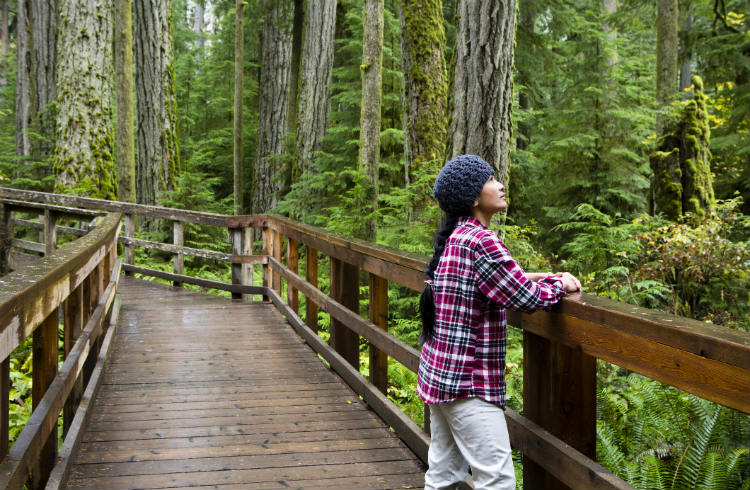
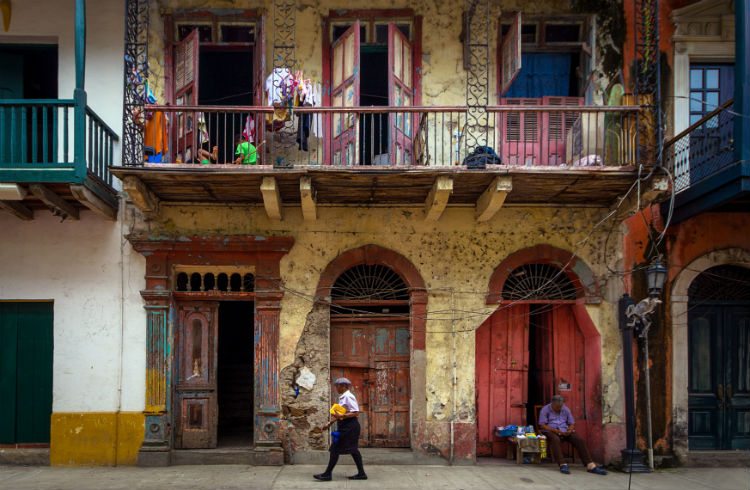
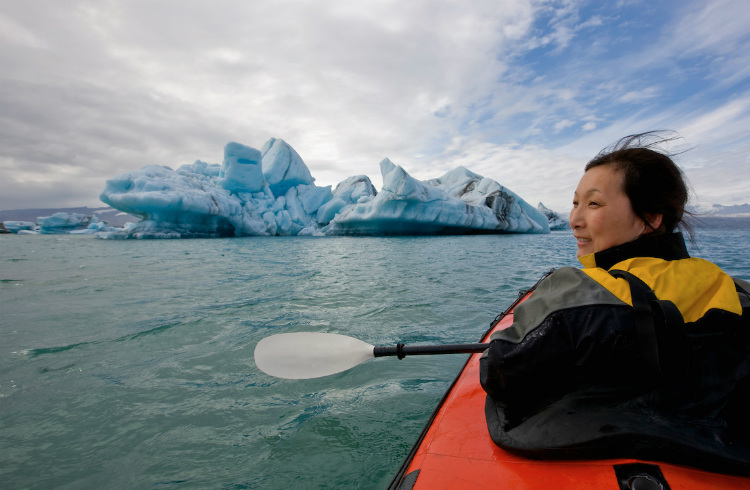
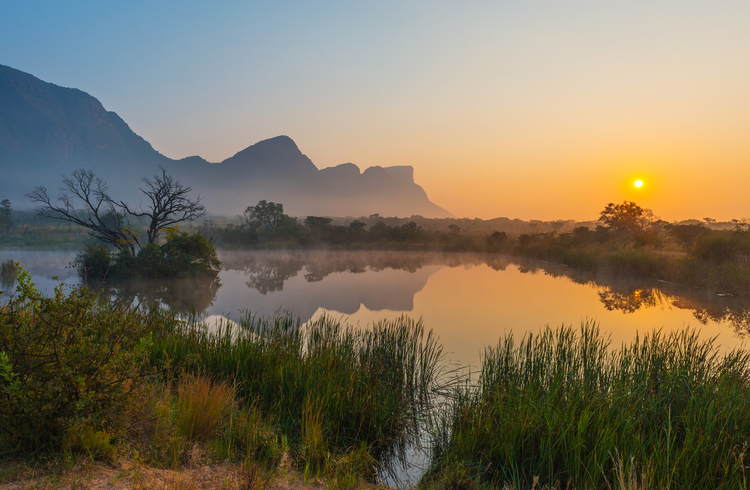
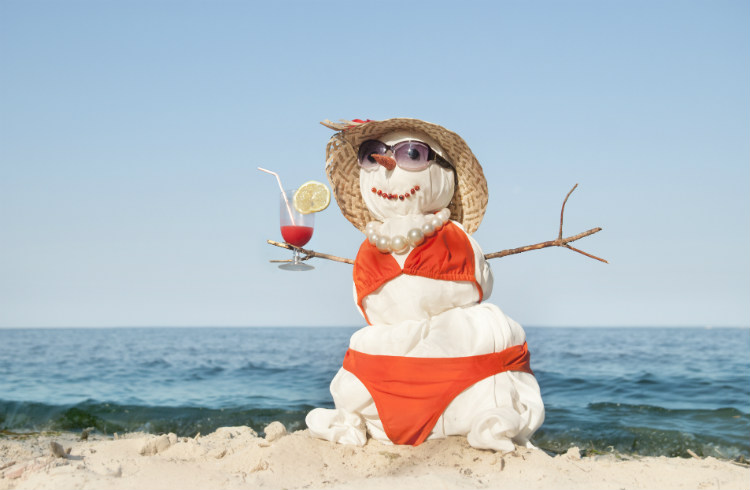

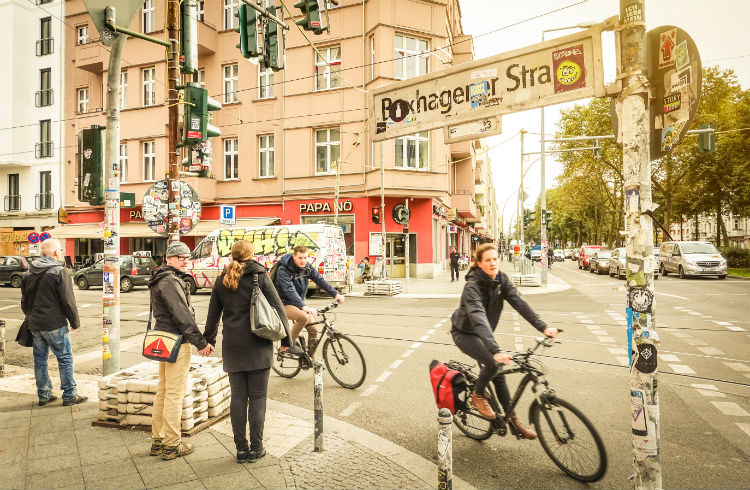
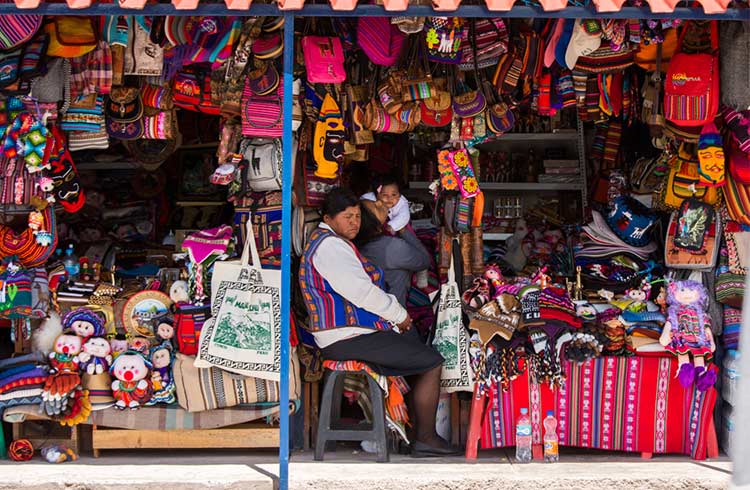
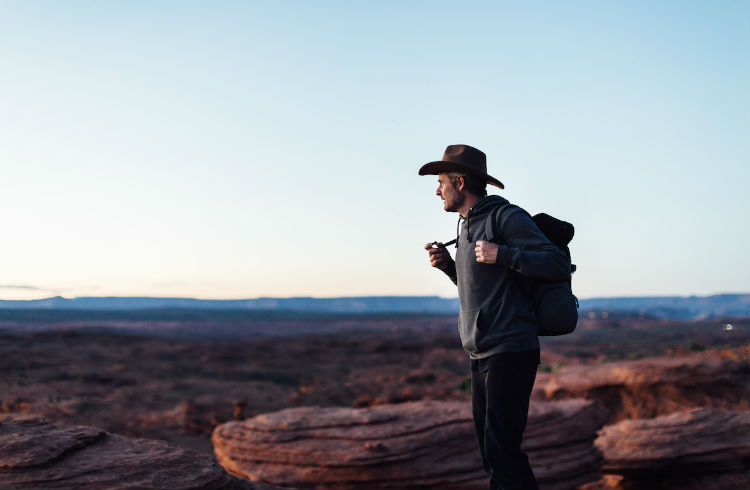
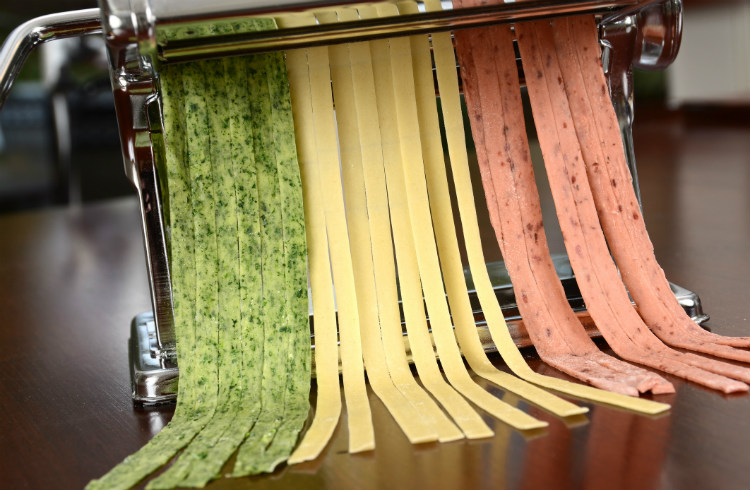
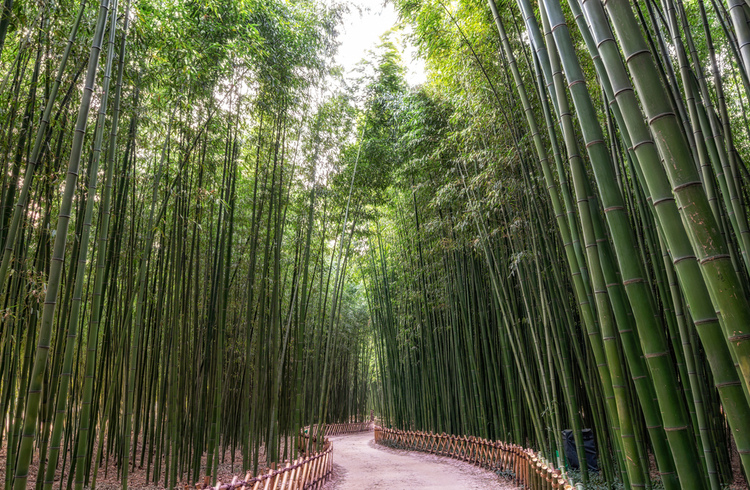
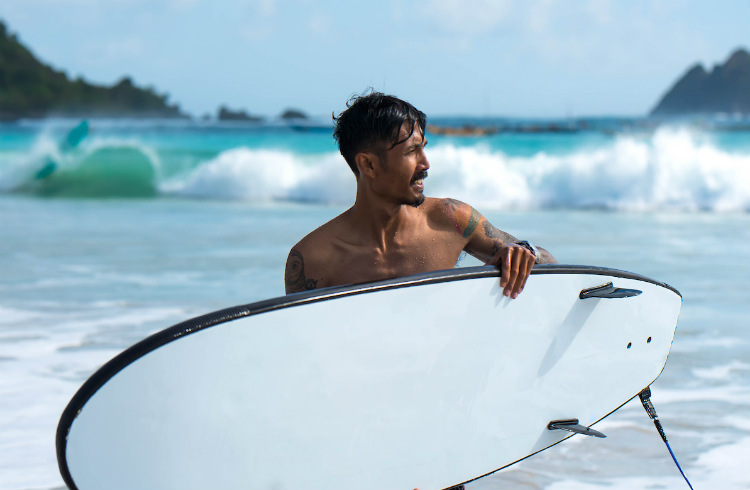
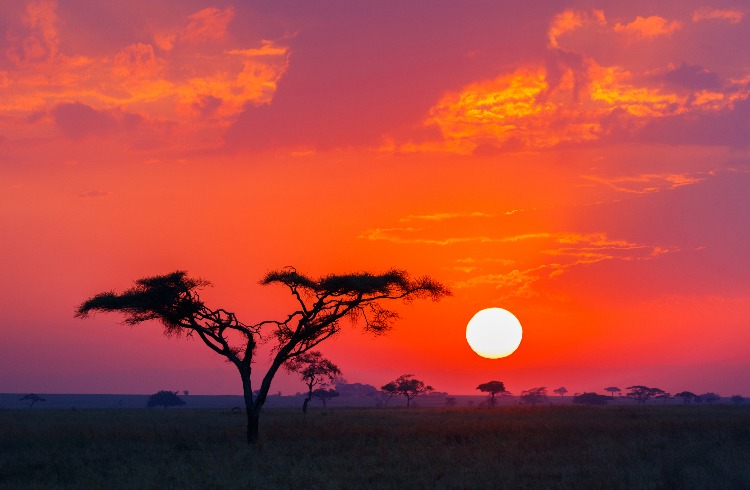
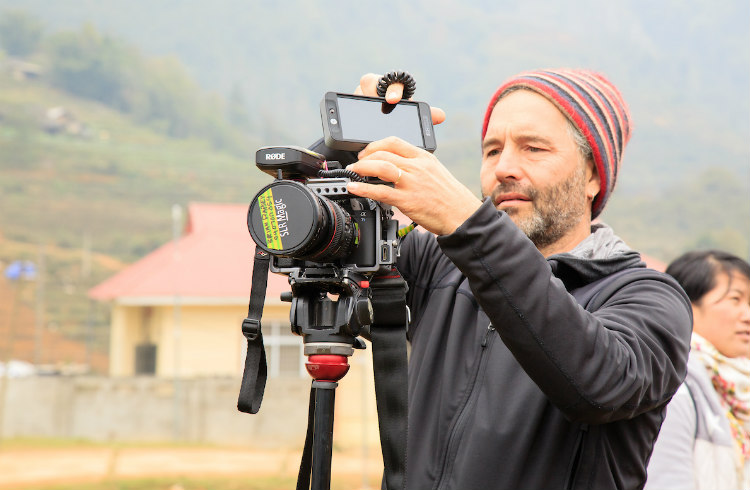
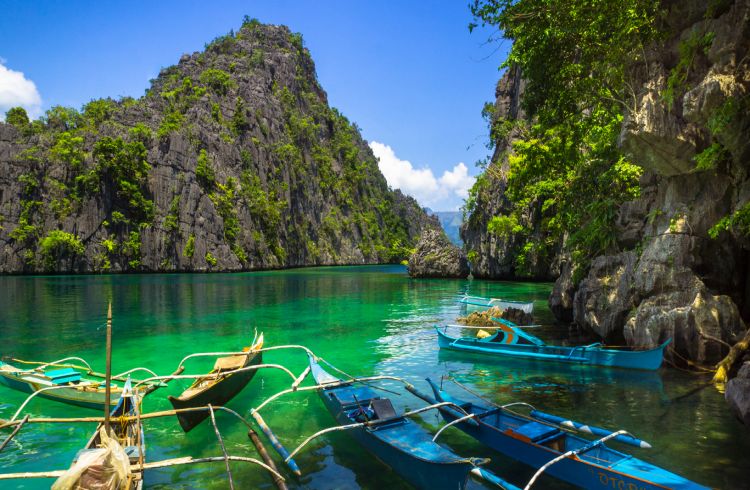
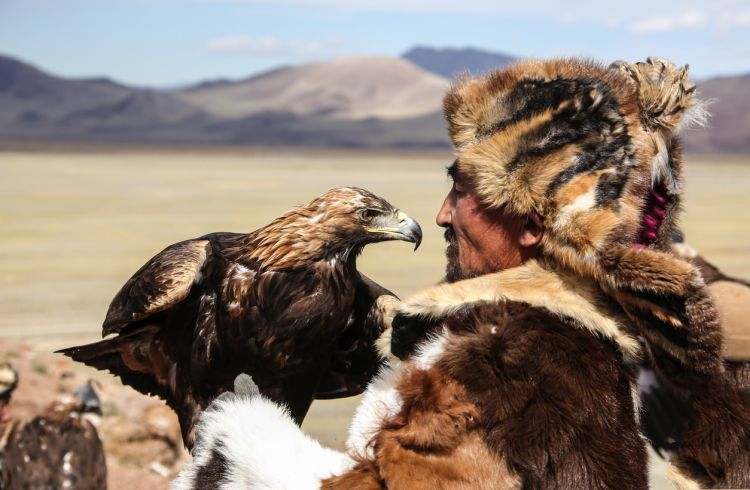
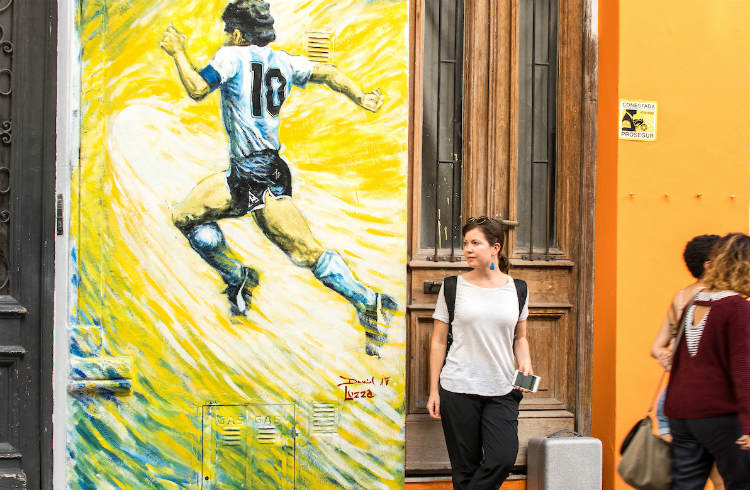
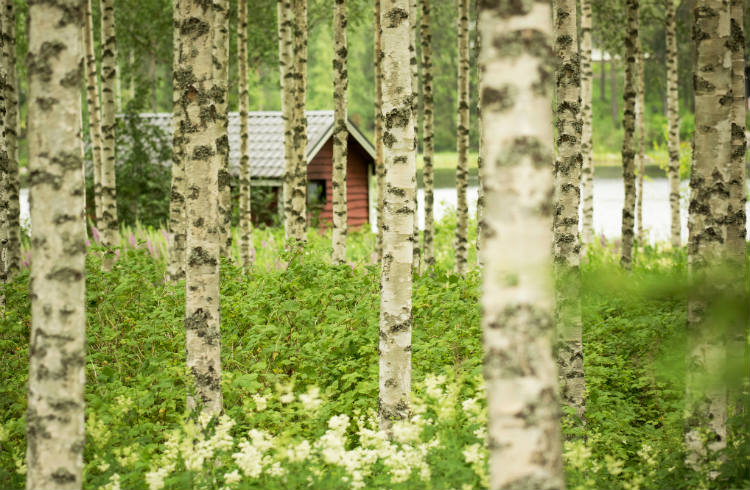

No Comments